What Exactly Are Nudibranchs & Why Are These Kaleidoscopic Sea Slugs So Remarkable
By Something CuratedWith more than 3000 known species and further variations continually being discovered each year, nudibranchs, informally known as sea slugs, are a widespread and flourishing group of soft-bodied, marine gastropod molluscs. Shedding their shells after their larval stage, nudibranchs thrive in seas worldwide, ranging from the Arctic, through temperate and tropical regions, to the Southern Ocean around Antarctica. They are almost entirely restricted to salt water, although a few species are known to inhabit lower salinities in brackish environments.
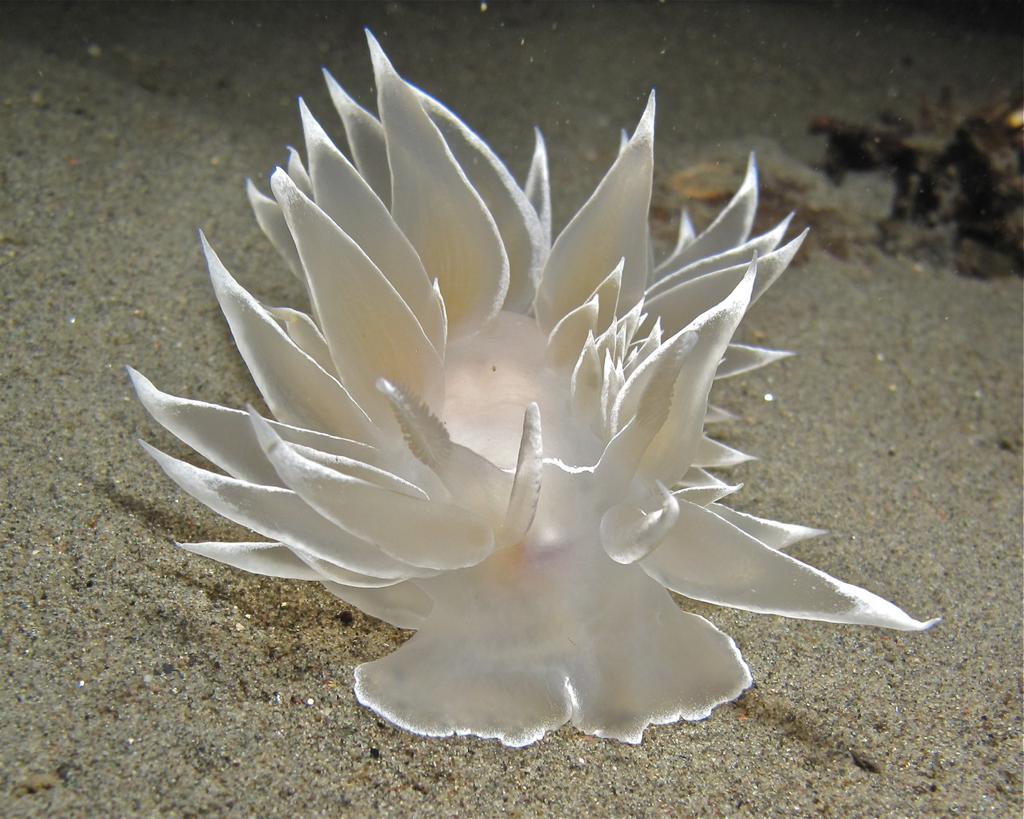
Members belonging to this fascinating group are some of the most colourful creatures on earth. Over the course of evolution, these sea slugs have developed a host of innovative defence mechanisms. At times, their anatomy may resemble the texture and colour of the plants that surround them, providing them with an effective means of camouflage. On the other end of the spectrum, several have an intense and bright colouring, which loudly warns their predators that they taste bad or are poisonous. Rather brilliantly, from grazing on algae, some nudibranchs can also take in plants’ chloroplasts, plant cell organelles used for photosynthesis, and use them to make food for themselves.
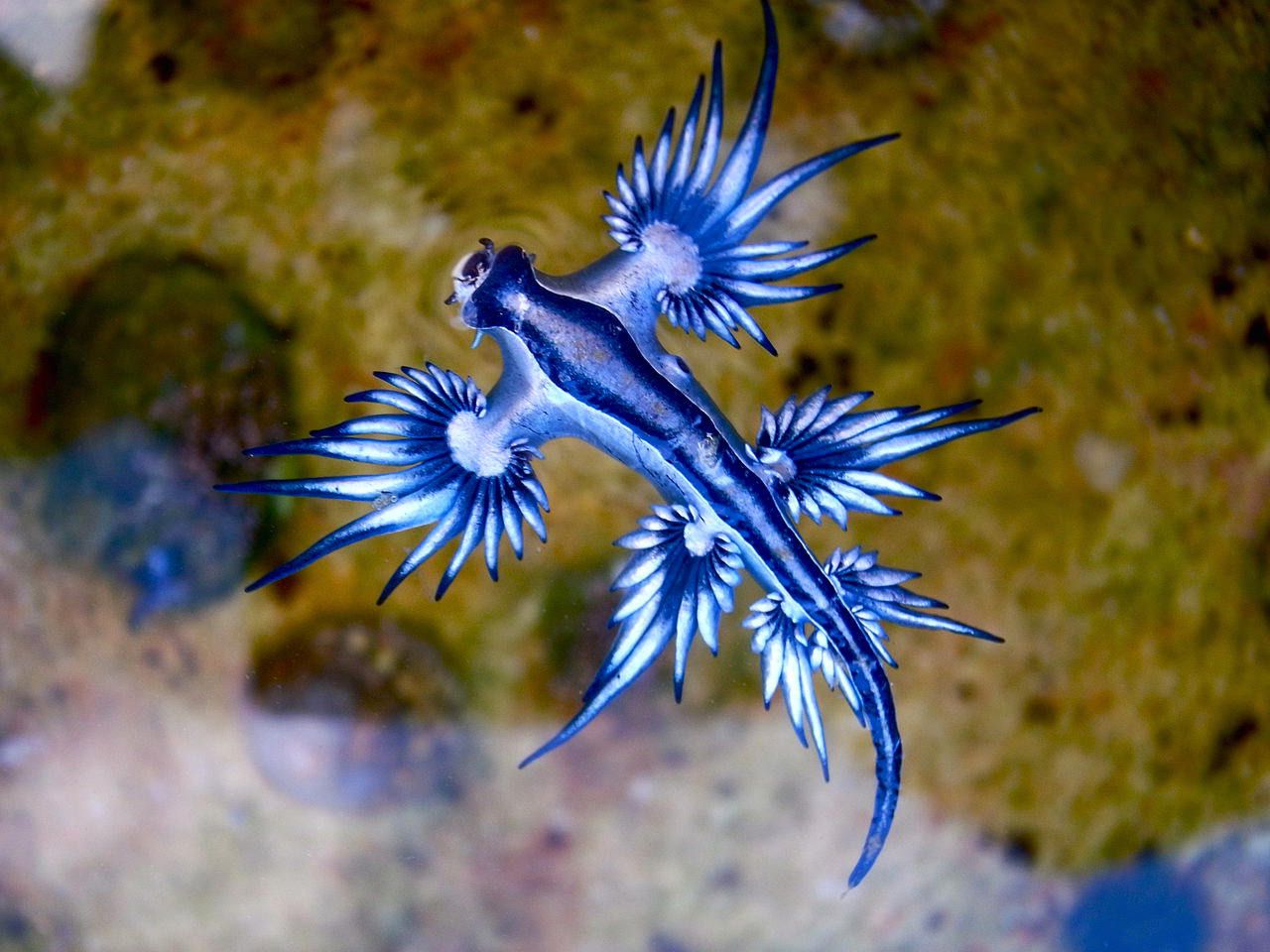
Best known for their vivid colours and unusual forms, nudibranchs have been given many nicknames to match their looks, such as the Clown, Pikachu, Marigold, Sea Lemon, Dancer, or Sea Rabbit. Among the most striking of the varieties is the Glaucus Atlanticus, often referred to as the Blue Dragon due to its mythological appearance. Unlike most types of nudibranch, the Blue Dragon is not found residing on the seabed but rather spends the majority of its time floating upside down on the surface of the water. Then there is the Leaf Sheep, officially known as Costasiella Kuroshimae, this adorable variety is found in the waters surrounding Japan, Indonesia and the Philippines.
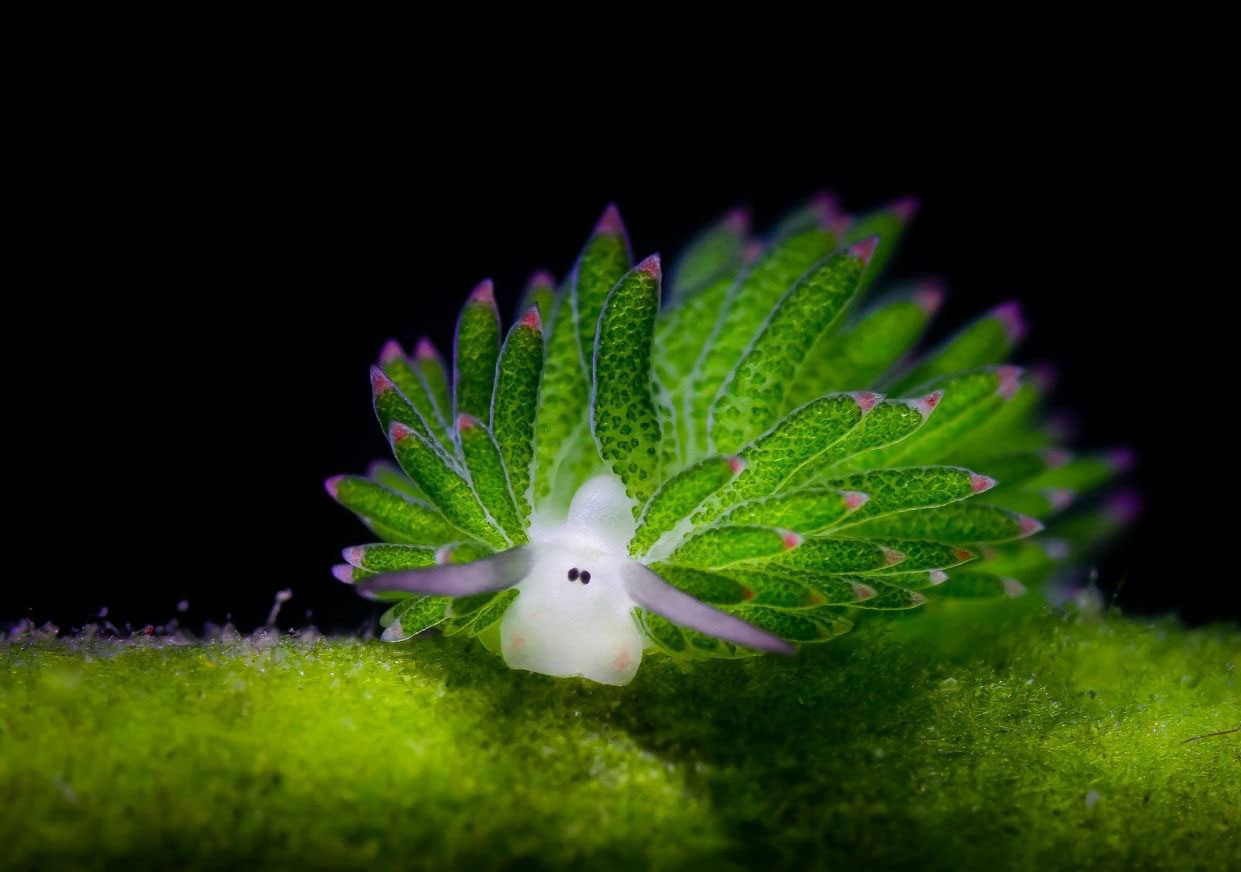
The Flabellinopsis Iodinea, or Spanish Shawl is perhaps one of the most eye-catching types of nudibranch. Their brilliantly coloured bodies are typically purple or blue, while their backs, a shawl of cerata – outgrowths on the upper surfaces of the body – manifest as fluorescent orange spikes. Then there is the Halgerda Batangas, adorned with ornate markings, characterised by a dazzling orange pattern and dotted with rounded bumps, giving this unusual nudibranch its distinctive shape. They originate from the island of Mactan in the Philippines, however the Halgerda can now be found throughout Indonesia, Papua New Guinea and the Solomon Islands.
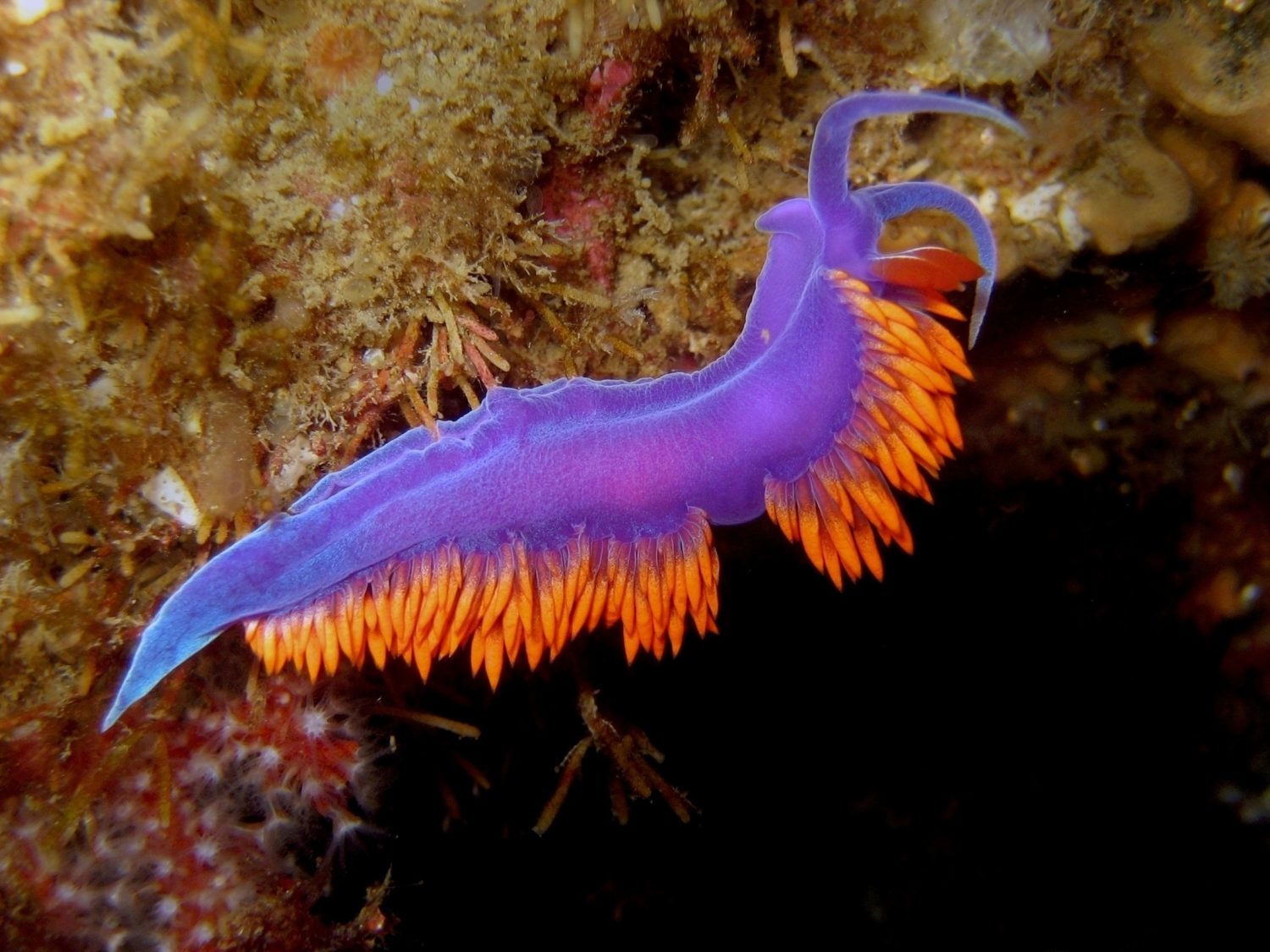
Nudibranchs that feed on hydroids, small predatory animals which mostly live in the sea such as jellyfish, can store the hydroids’ stinging cells in their body wall. Remarkably, the stinging cells can move through the nudibranch’s body without causing it any harm. Then, the cells are brought to specific places on the creature’s hind body, and are repurposed to protect themselves from other animals. Another method of protection is the release of a sour liquid from the skin. Once the nudibranch is physically irritated or touched by another creature, it will release the slime automatically.
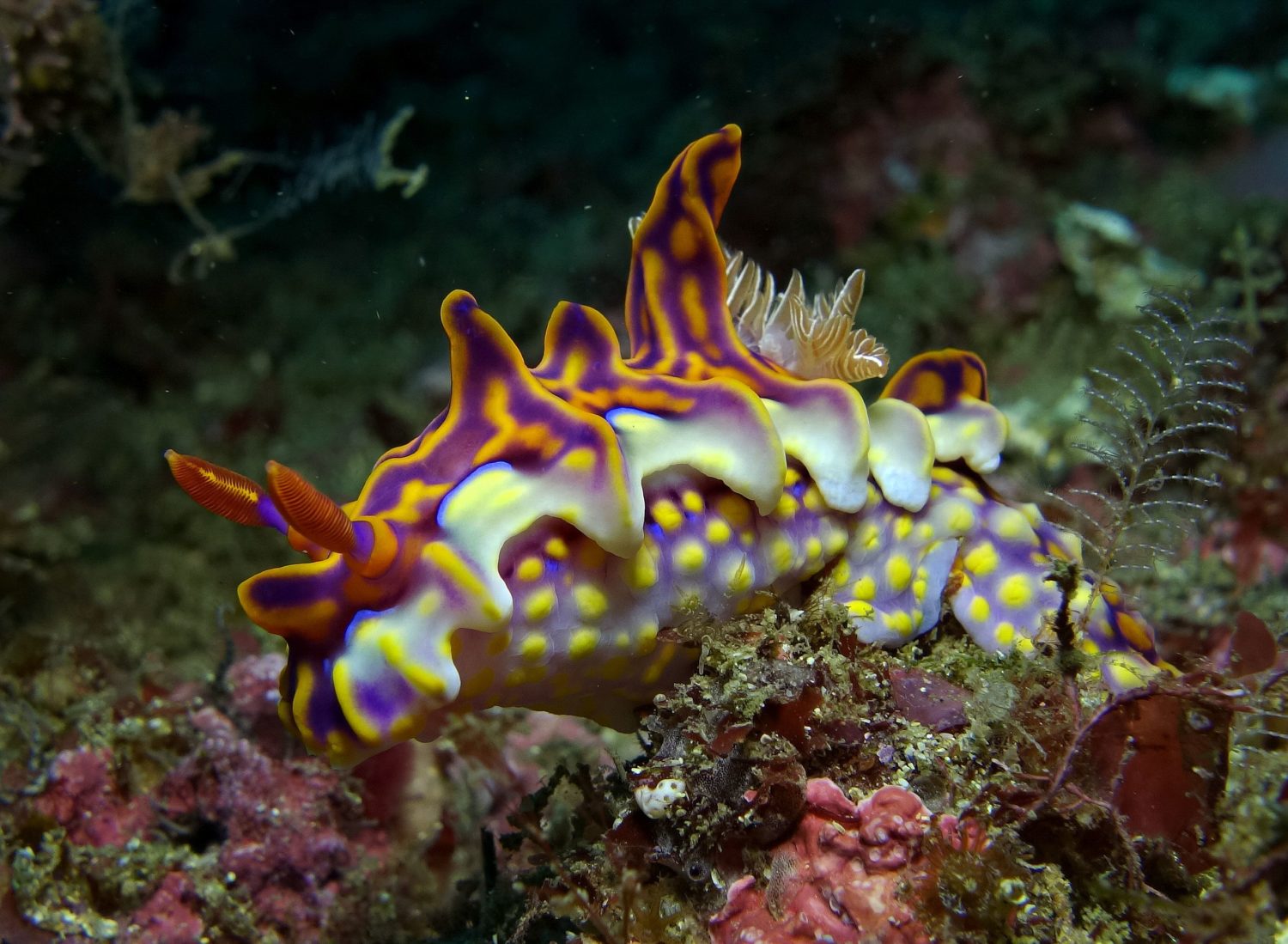
Nudibranchs are hermaphroditic, possessing a set of reproductive organs for both sexes, but they cannot fertilise themselves. Mating usually takes a few minutes, and involves a dance-like courtship. The creatures typically deposit their eggs within a gelatinous spiral, which often looks like a ribbon. The number of eggs varies vastly according to the variety; it can be as few as just one or two eggs or as many as an estimated 25 million. After hatching, the infants look almost identical to their adult counterparts, although smaller. The lifespan of nudibranchs can range from anywhere between a few weeks to a year, depending on the species.
Feature image: Goniobranchus Kuniei (via Pinterest)